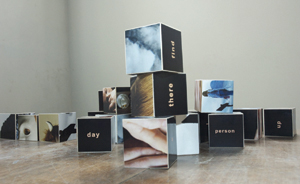Toby Lowe considers the role that participatory arts can play in social inclusion

How can we reflect on who we are and what matters to us? How can we understand other people? These might seem like abstract questions to begin an article about participatory arts, but I think they are important when trying to understand the vital role that participation in the arts can play in working towards a fairer, more inclusive society. Pursuing quality in participatory arts matters more than ever, as questions of social inclusion and justice are being seen through a ‘Big Society’ lens. We need to be able to examine and reflect on the narratives we use to make sense of the world and our position in it. For any kind of politics to work effectively we need to understand the narratives of other people – what’s important to them and why. It’s these two concepts that drive participatory arts organisations around the country to promote equality of opportunity to participate in the arts. We think that the core of doing participatory arts well is to understand it as a creative process which engages artists with participants. Participatory arts is a tool to help people explore who they are and to communicate that understanding to others. It is a way of using arts practice to empower people to reflect on the cultures they are part of and which have helped to form their identity.
Participatory arts puts people in touch with their spontaneity, their use of language, the way they hold their bodies/ and the music, rhythms, symbols and images to which they are drawn and which they create. Participation in the arts gives us the tools to reflect on who we are, both as individuals and collectively. It gives us important mechanisms for personal development. It enables us to listen to others and understand their needs, and helps us to make sense of what ‘we’ means – who’s in and who’s out? If local neighbourhoods and communities are going to make decisions about what’s important, who needs support and how, then they need to hear everyone’s voice.
This is why equality of opportunity to participate in the arts is important to social justice and to making ‘Big Society’ work. Participation in the arts provides personal development tools to those who may have lived with poverty and exclusion, and enables us collectively to hear the voices of those who otherwise get ignored. In order to play this role, it’s vital that participatory arts is done well. It can’t just be diversionary activity to keep bored youths occupied for a couple of hours a week. So what does quality mean? At Helix Arts, we’re trying to use the ideas of reflecting on personal and collective narratives as the basis of understanding what quality means. We’re developing a set of standards that outline what high-quality participatory arts practice looks like to us, and we want to engage a whole range of people in conversations about these.
CREATING SPACE
High-quality participatory arts needs the right ‘space’ in which to happen. It must be right for the participants, it must understand their support needs and enable them to define their own creative journeys, it must empower people to explore and tell their own stories, not have them told by other people. The project must give sufficient time for artists to build interesting creative relationships with participants and equip them with the resources to produce the work they want, to the standard they want. It should make sure that we don’t just leave people hanging at the end of a project.
CREATIVE PRACTICE
We are starting to use our understanding about participatory arts to help us identify the types of artists we want to work with. We’re interested in practices that enable people to experiment with their individual and collective stories. We want to work with artists who build participants’ self-reflective skills by using their own artform practices to help participants reframe and reflect on their words, symbols and images, feelings, actions and beliefs. We also think it’s important that artists build a reciprocal relationship with participants where everyone is exploring and learning.
QUALITY MATTERS
We think that now is the time to say that quality matters. The public policy landscape has changed dramatically – closing many doors but opening others. Resources remain the key problem. Can we do more for less? We will come under great pressure to cut artists’ fees, to run shorter projects with more people, to forget about progression. If such cuts mean that our work is no longer able to help people explore and tell their own stories, then they should be resisted. Our society needs to hear everyone’s voices and we can play our part in making that happen.
Toby Lowe is Head of Programme at Helix Arts, a participatory arts organisation whose mission is to create opportunities for the most disadvantaged and marginalised people in society to take part in the arts. Helix Arts works throughout the North East of England with a diverse range of public, private and third sector partners.
http://www.helixarts.com
This week Toby enjoyed a couple of live bands: Budvivar at the Jazz Café in Newcastle and Iceni at The Cumberland Arms in Byker. At the weekend he will be dancing at Newcastle’s fantastic Ping Pong Club – also at the Cumberland Arms.



